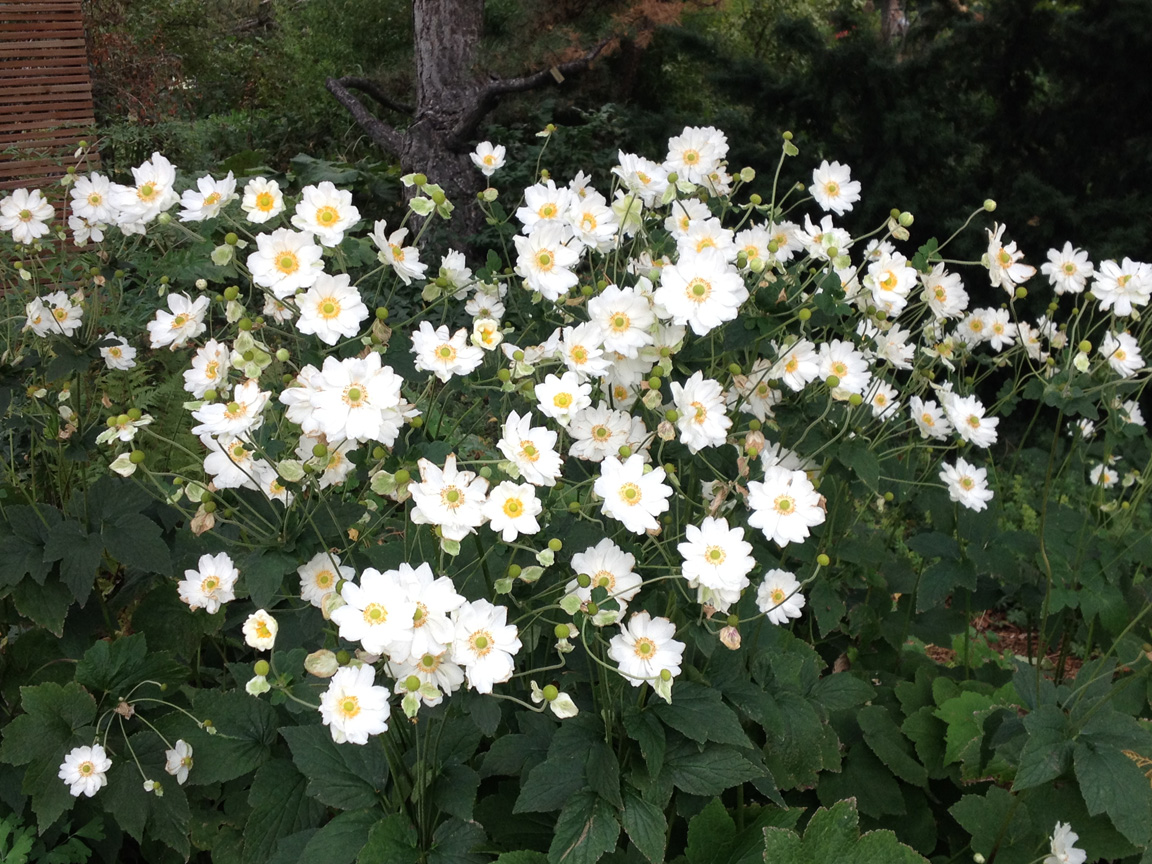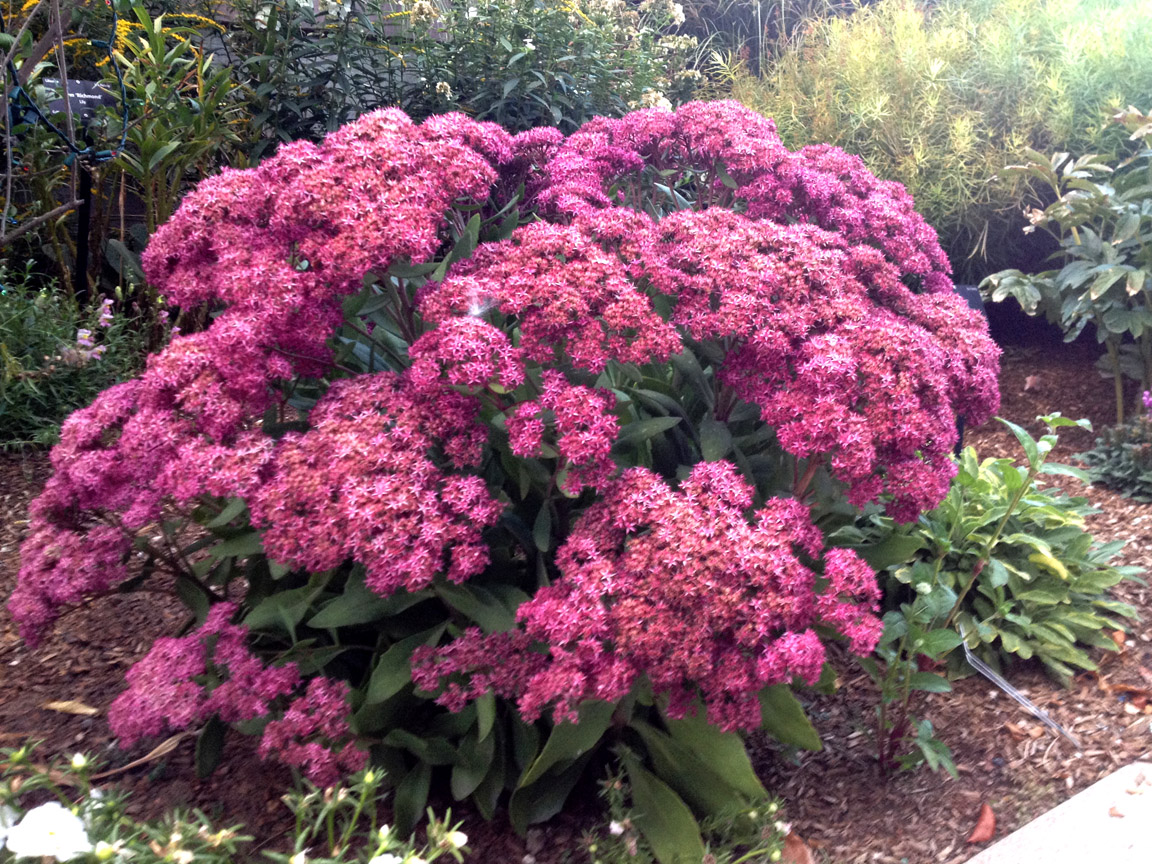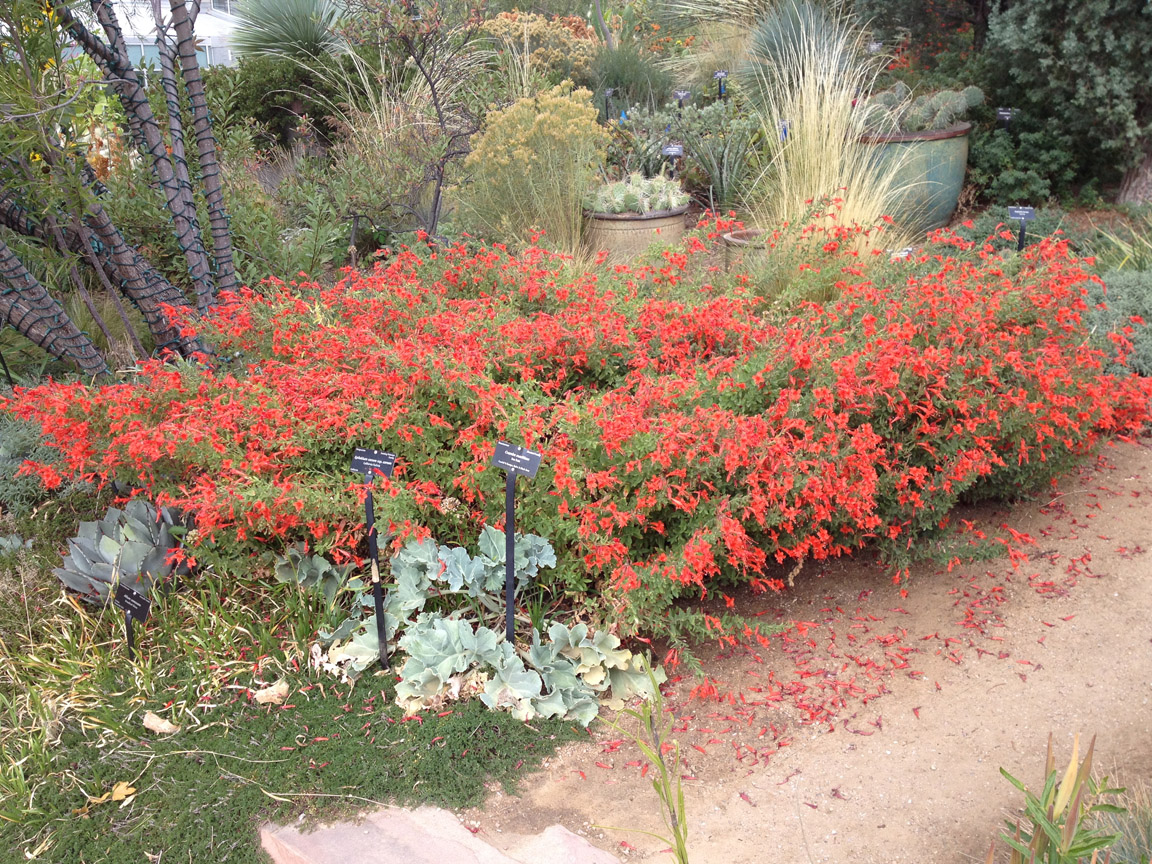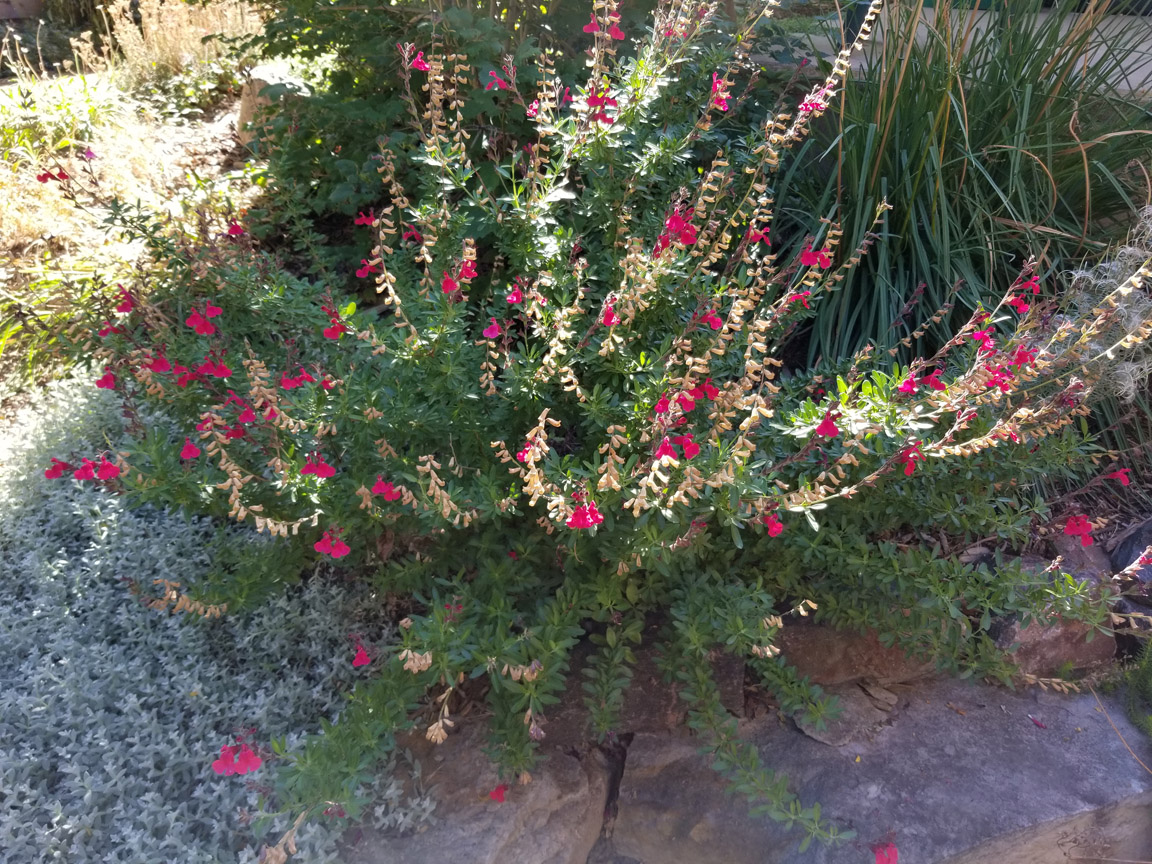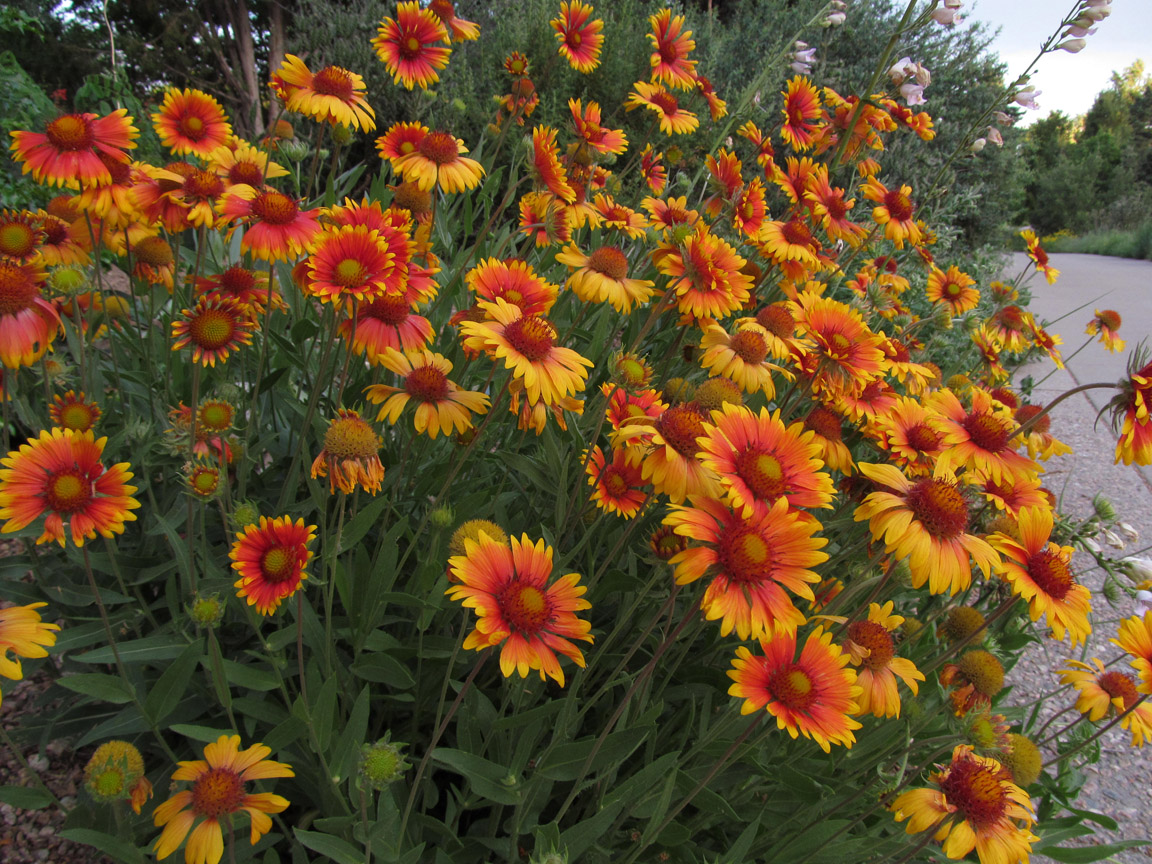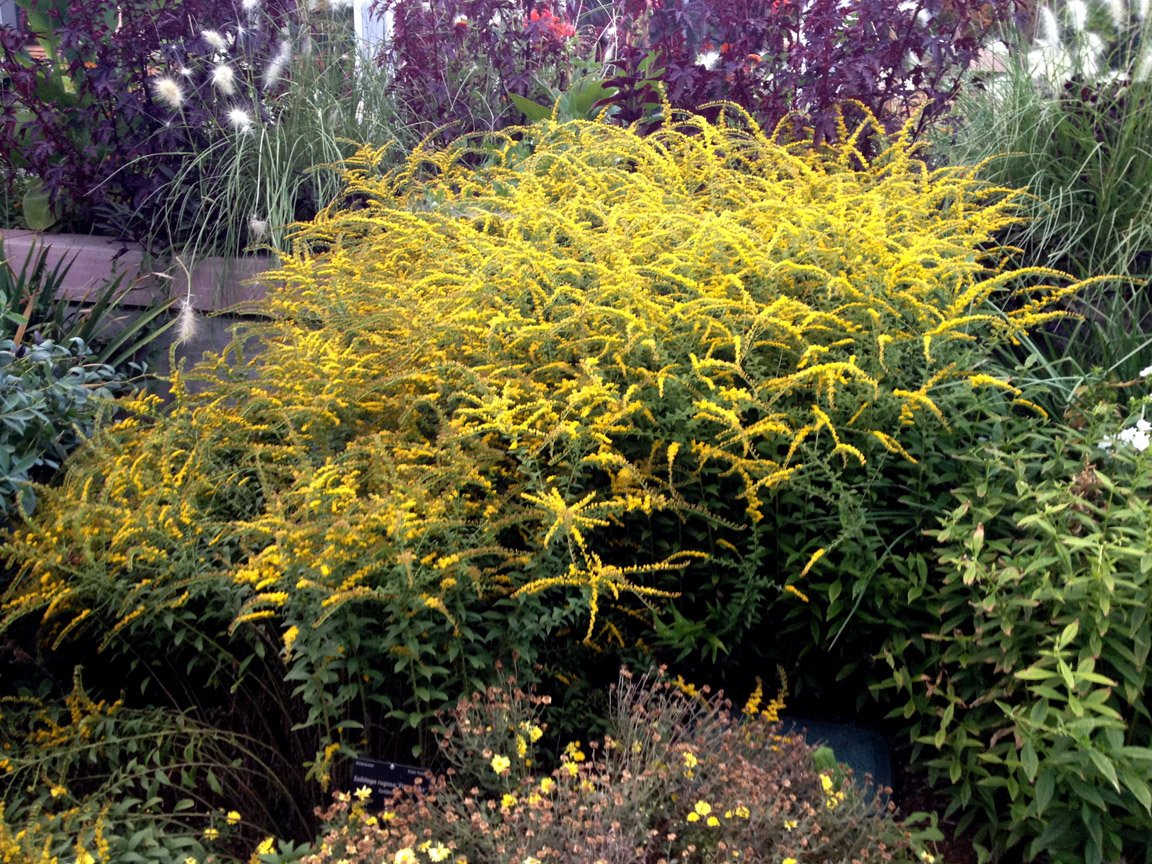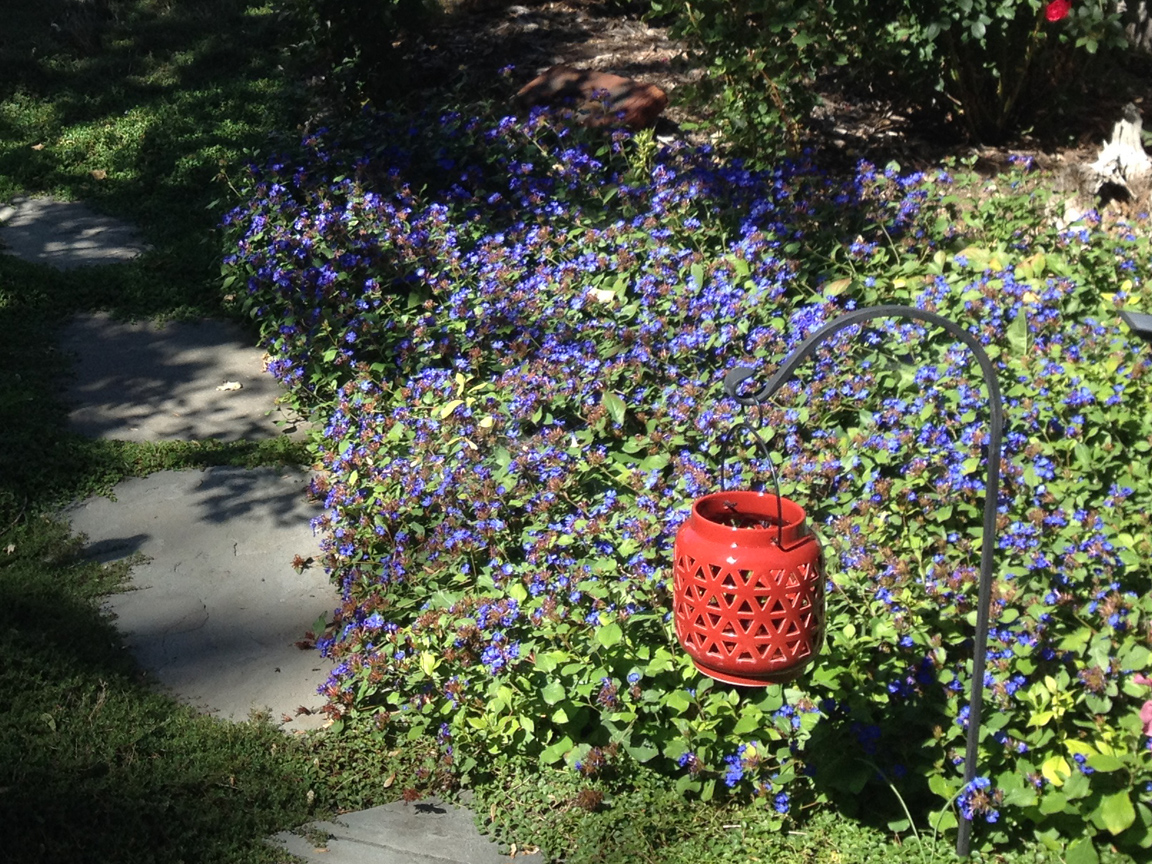What’s That Stench? – The Corpse Flower & Other Fetid Flowers
This past August, the Denver area was captivated by another blooming of a corpse flower (Amorphophallus titanum) at the Denver Botanic Gardens. Large crowds lined up to get their chance to get a whiff of the bloom that emits a fragrance similar to a rotting animal carcass. I was one of the masses of plant geeks who waited in line early on a Friday morning before work, just to get a glimpse and a sniff of the malodorous corpse flower. The first bloom of an Amorphophallus titanum plant doesn’t appear until after 8-20 years of vegetative growth. A second bloom from a corpse flower may not occur until as long as 10 years after the previous bloom. Although this was the Denver Botanic Gardens third bloom of a corpse flower, the rare occurrence for a bloom (along with the plant’s other odd characteristics) leads to a lot of excitement for botanical enthusiasts.
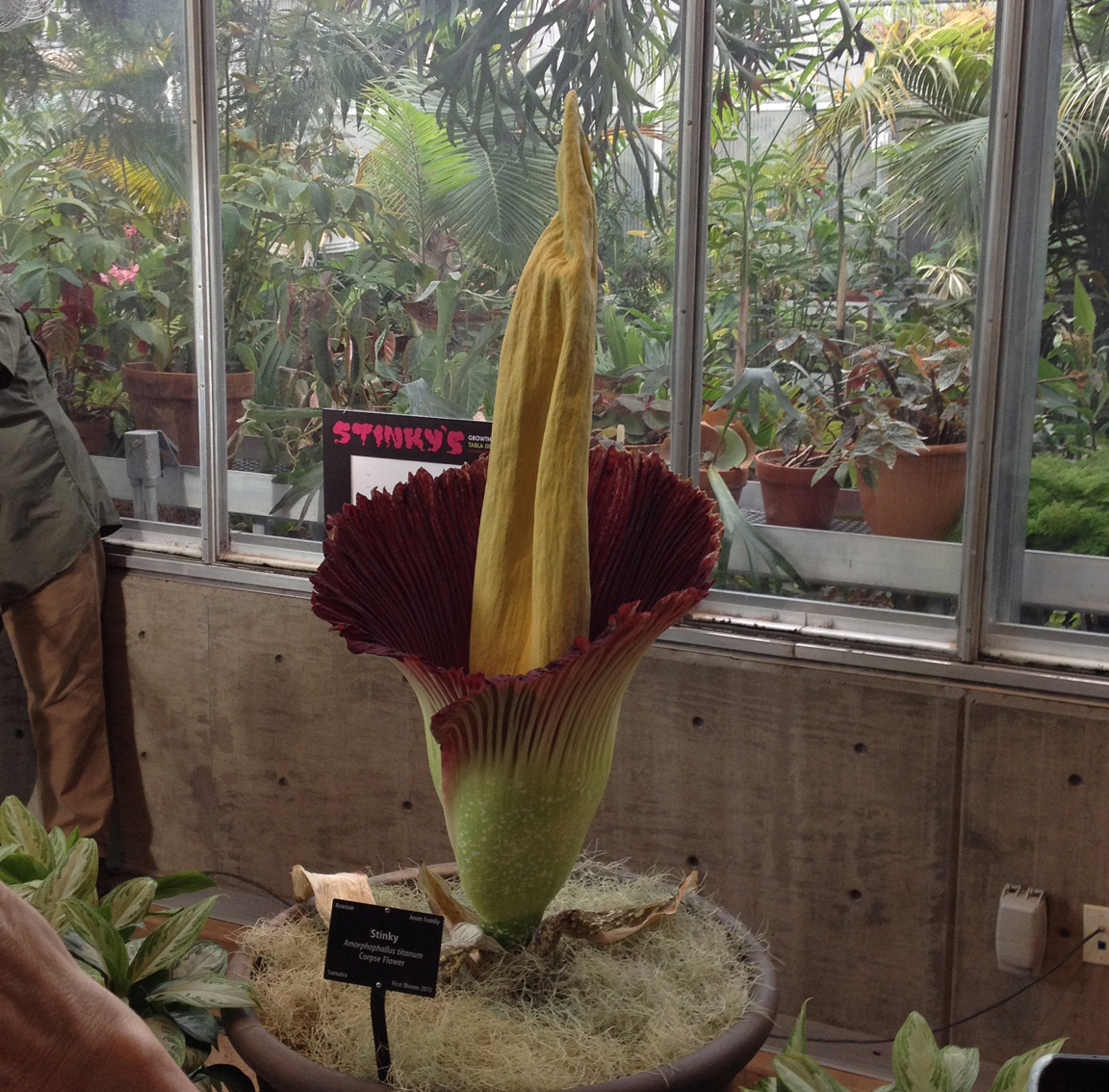
Amorphophallus titanum photographed at the Denver Botanic Gardens on August 31, 2018.
The foul stench of the bloom is not as interesting as the giant size and fascinating form of the flower. This Indonesian rain forest native sports a huge flower (it is actually many flowers, aka an inflorescence, grouped together on one fleshy axis, what botanists call a spadix) that is unlike any flower that grows in North America. In fact, botanists tell us it is the “largest unbranched inflorescence in the world”. The massive size of the flower is the source of another common name for it, the Titan Arum. That common name was bestowed by the British naturalist and TV host Sir David Attenborough for his BBC series “The Secret Life of Plants”. Mr. Attenborough felt that repeatedly calling the plant by its botanical genus name Amorphophallus (Greek for misshapen phallus) was “too rude for television audiences”.
Readers are likely familiar with other plants that bear spadixes such as the common houseplant, the Peace Lily (aka Spathiphyllum, related to the corpse flower, and also in the Arum family of plants). Unlike the inflorescences of the peace lily which are around 6 inches in length, the corpse flower inflorescence can grow as tall as 10 feet, although the one at the Denver Botanic Gardens (nicknamed “Stinky”), was probably closer to 4 or 5 feet tall. In the center of the flower is the large and somewhat crumpled looking spadix. Framing the giant spadix, is a wine colored skirt-like apparatus that appears to be a type of flower petal, but in actuality is called a spathe. The spathe is a modified leaf which helps protect the spadix.
Aside from the fascinating scale and form of the corpse flower, the rank stench it produced was curious as well. While viewing the bloom, I would describe the acrid scent as similar to an infant’s dirty diaper. There are several repulsive chemicals released during its peak bloom period. Scientists have recorded a range of compounds emitted by the corpse flower that are also found in limburger cheese, animal feces, stinky feet, and dead fish, along with some other not so foul compounds. The exact foul fragrant mix emanating from the flower might vary hourly from rotting fish to rancid cheese throughout the blooming time. All of these nauseating notes are released as the plant is able to heat itself up to 90 degrees Farenheit, helping to volatilize the stench and get noticed by pollinating insects that might pass by. The increased heat of the bloom is theorized to also give the illusion of a recently deceased animal carcass.
Before we look at other stinky flowers, it is interesting to note that there are about 170 other species closely related to Amorphophallus titanum. Botanists report that many of these 170 species emit various unpleasant odors that range from rotting meat to rancid cheese. And size of flower does not translate to the power of stench. Some of the smaller species stink the most. However, some of the 170 species actually smell pleasant to humans, such as A. haematospadix, that smells of banana, and A. manta which smells of chocolate.
While the corpse flower may get all the attention for being one of the world’s most unpleasant floral scents, there are many other fetid flowers that are lesser known, but are just as notable for their “disagreeable odors”. Apparently emitting foul odors has been ecologically successful for several species. And of course, what humans may consider a foul stench, a carrion beetle may interpret as a false “dinner bell”.
Now on to the list of a few of the other unpleasantly scented flowers:
Rafflesia arnoldii – Another so-called “corpse flower”, this one is also native to Sumatra, Indonesia, like the other corpse flower (Amorphophallus titanium) that recently bloomed in the Denver Botanic Gardens greenhouse. This corpse flower is quite rare, and is a parasite on the host Tetrastigma leucostaphylum. It is said to have one of the largest (1m wide) individual flowers in the world, and has no roots or leaves. Most of its life is spent inside the stems and roots of its host. Rafflesia arnoldii only becomes visible when its flower buds break through the bark of the host and form into the large flowers, which like Amorphophallus titanium, also smell like rotting animal flesh. Unlike Amorphophallus titanium, Rafflesia arnoldii is very difficult to grow in cultivation.
Frittillaria agrestis -This flower from the lily family, commonly referred to as stinkbells, is purported to smell like dog feces. It is endemic to California.
Frittillaria imperialis –This is another flowering plant from the lily family, commonly called “emperor lily”. It’s native to Iraq, Iran and other parts of Central Asia, and has showy blooms that have endeared it to horticulturalists who’ve brought it into wide cultivation. The flowers are said to smell like skunk. Others say they have a “distinctly foxy odor” which repels mice, moles and other small animals.
Tree of Heaven (Ailanthus altissima) – This weedy tree, originally native to China, but now present in many urban and other disturbed sites in North America, emits a slightly unpleasant scent from its flowers. The smell is akin to rotting garbage. The leaves and green stems of Ailanthus also smell unpleasant when cut. The Chinese name for this tree, chouchun translates to “foul smelling tree”.
Hawthorne trees – (Crataegus, various species) These beautiful trees are a useful ornamental tree to have in a xeriscape garden. They are tough and beautiful drought survivors. However pretty the white flowers are in springtime, they do not, in my opinion, have a pleasant scent. Some observers have likened it to being like ‘power bait’, the fish lure. Luckily, it is not a very strong or long lived odor.
Lysichiton americanus – Western Skunk Cabbage. This North American native is a distant relative of the Amorphophallus titanum, as they are both members of the Araceae family. It is native to wet areas of the Pacific Northwest. As the name suggests, it emits a “skunky” odor.
These are just a few of the many unpleasantly scented plants to be found in our world. Perhaps you have one you would place in this group of foul smelling botanicals?
This is the official blog of Outdoor Design Group, Colorado Landscape Architects. For more information about our business and our services, click here.
